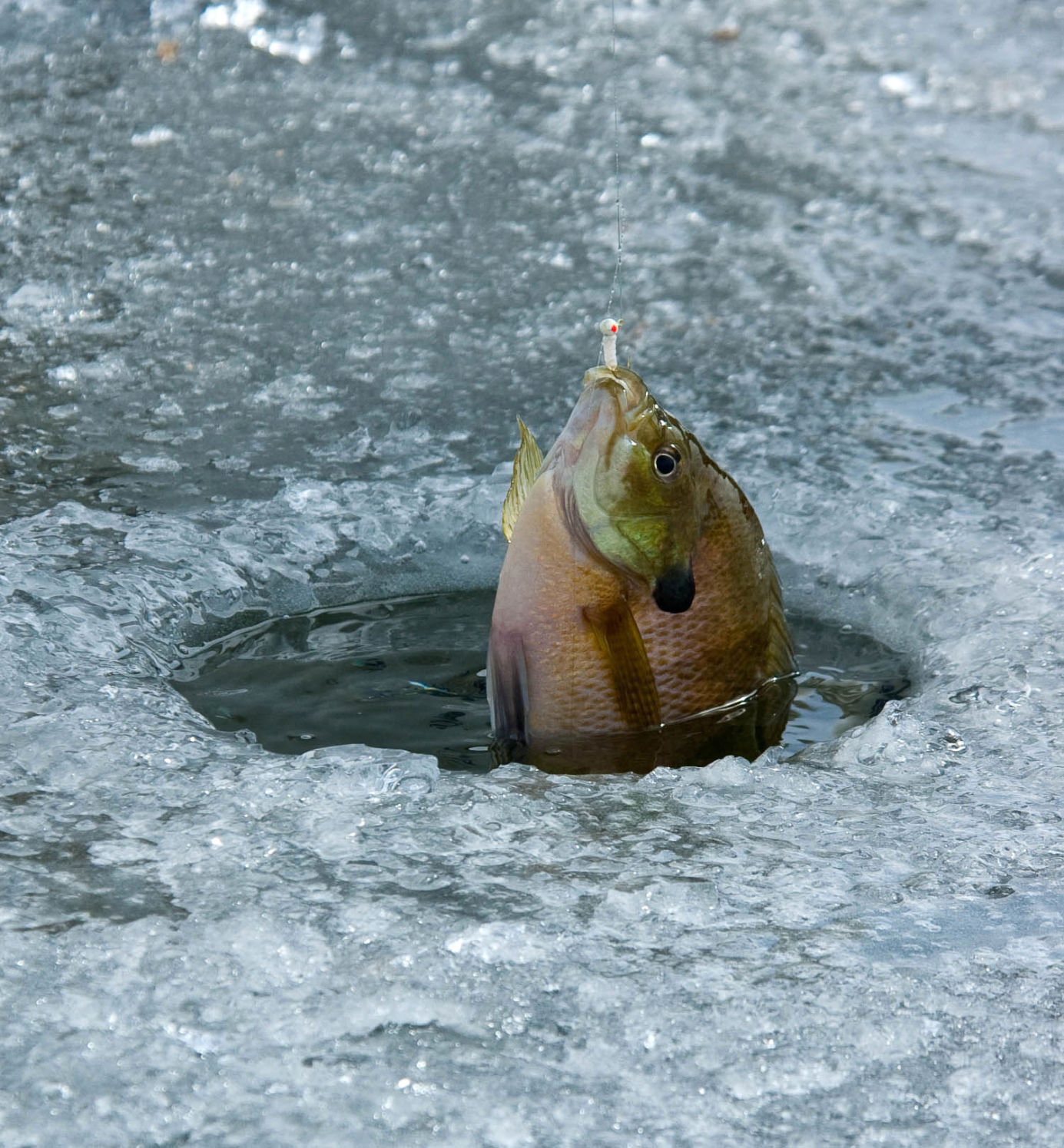If you’re like most folks, work and family commitments take up lots of your time. But that doesn’t mean you can’t break away for some quick ice fishing trips this winter. Utah is dotted with great ice fishing opportunities that aren’t too far from your home.
Randy Oplinger, sport fisheries coordinator for the Division of Wildlife Resources, says ice fishing is a great way to get outside, relax and catch some fish. “You don’t have to be an expert to catch fish through the ice,” he says. “Many species, especially trout, are fairly easy to catch in the winter.”
To identify some of the best waters to fish in Utah this winter, visit www.wildlife.utah.gov/hotspots. You can also receive the free Division of Wildlife Resources fishing reports found at the site by subscribing to them at www.wildlife.utah.gov/about-us/subscribe-to-updates.html. After subscribing, the latest fishing reports will arrive in your email inbox.
Two additional websites—www.bigfishtackle.com and www.utahwildlife.net—also provide updated ice fishing information for waters across the state.
Tip 1 – Trout
Trout can be found at any depth in the water column, but Oplinger likes to start his search at the bottom of the water he’s fishing. Start by tying a small to medium-sized jig or spoon to the end of your line, and thread a meal worm or a wax worm on the lure’s hook. After threading the worm, open the bail on your spinning reel, and lower the lure and worm until it touches the bottom. (When your line goes slack, you’ll know it’s reached the bottom.)
After the lure touches bottom, close the bail, and reel the lure until it’s just a few inches off the bottom. Then, let it sit still and watch your bobber closely. It’s also a good idea to occasionally “twitch” the rod, to make the jig or spoon move.
If a trout is in the area, there’s a good chance it will swim in and take the lure. If your spring bobber or slip bobber starts to twitch, raise your rod, set the hook and reel your fish in.
“If you’ve waited a few minutes,” he says, “and a fish hasn’t taken your lure, reel it up a few feet, stop and start watching your bobber again. Keep doing that until you find the depth at which the fish are holding.”
If you don’t get any bites, pick up and move to a different location.
Tip 2 – Trout
If you’d like to try a more-active approach, follow the procedure above, but instead of letting the lure and worm sit still, try jigging it.
(To jig a lure, subtly twitch your fishing rod up and down or side-to-side. The twitching causes the lure below to move, giving it action and making it look alive.)
Oplinger suggests the following routine for trout: jig your lure for a few seconds, let it sit for 10 to 15 seconds, and then jig it again. Once every one to two minutes, raise the lure about one to two feet, and then let it flutter back to the starting point before pausing and then jigging it subtly again.
“Letting the lure flutter one to two feet often attracts fish,” he says, “bringing them closer to the lure for a better look.”
If you don’t get any bites at the depth you’re jigging, reel the lure up three or four feet, and start jigging again.
Tip 3 – Walleye
Boren says walleye can be very tricky to catch, but placing a piece of bait (a meal worm, sucker meat, even a nightcrawler) on a medium-sized jig, and then dropping the jig and bait to the bottom, is a good approach. “Walleye typically feed on the bottom,” she says, “so that’s the area you want to fish.”
Another good approach is to fish with a Rapala Jigging Rap. To fish this lure, drop it a few inches from the bottom, let it sit for a few seconds, then raise your rod tip about a foot and drop it back to the starting point. Raising and lowering the rod tip causes the lure to swim in a circular motion.
Boren says a fish finder is an important tool that can help you locate schools of yellow perch that walleye prey on and the structure walleye hold tight to.
“Starvation has some big walleye in it,” she says, “but it also has an abundant and growing population of smaller walleye. The walleye limit is 10, but only one fish can be over 24 inches. Please consider keeping your limit of smaller walleye to reduce competition for food and help the remaining walleye grow to a larger size.”
Fishing seminar
If you’d like to learn or brush up on the basics of ice fishing, you can watch a seminar held recently in Salt Lake City. The seminar is available at http://bit.ly/2nAvhi2.
Ice fishing tips from Division of Wildlife Resources

Ice fishing tips from Division of Wildlife Resources
